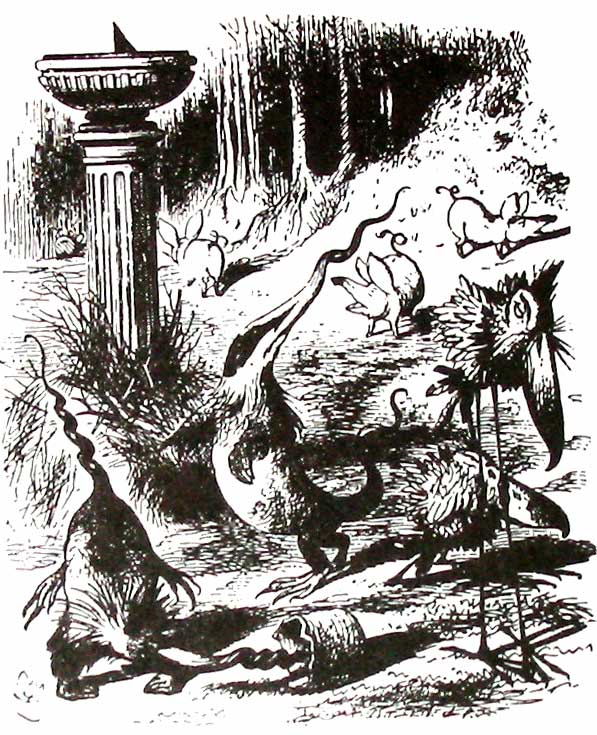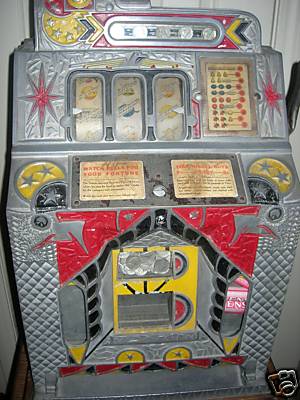Saturday, February 28, 2009
The Roast...An Oral Setting
I just recently learned how to put movies on my blog, so bare with me while my excitement lasts. This clip is Don Rickles roasting Bob Hope on the Dean Martin Show. It's a live haranguing and the people laughing remind me of groundlings in a Shakespeare comedy. I much prefer the sense of humor of the 1960's and 70's than the vulgar lasciviousness of the roasts today. Anyways, here is an oral setting that might be worth contemplating.
Memory Trick - posted by R.Blogger
 Take Note: Doodling Can Help Memory
Take Note: Doodling Can Help Memory 
"If someone is doing a boring task, like listening to a dull telephone conversation, they may start to daydream," study researcher Professor Jackie Andrade, of the School of Psychology at the University of Plymouth, said in a news release issued by the journal's publisher. "Daydreaming distracts them from the task, resulting in poorer performance. A simple task, like doodling, may be sufficient to stop daydreaming without affecting performance on the main task."
In everyday life, Andrade said, doodling "may be something we do because it helps to keep us on track with a boring task, rather than being an unnecessary distraction that we should try to resist doing."
Thursday, February 26, 2009
Re-membering Finnegan

Did gyre and gimble in the wabe;
Wednesday, February 25, 2009
The Prophet of the Airwaves
It's midnight, later, 2 a.m. I look at the digital red clock numbers. It tells me its' 4 a.m. If I go to bed now I can still catch a few hours of sleep, can't sleep, the television told me I might be one of the millions that can't sleep due to restless leg syndrome. Finally American's get the itch to start walking around and they diagnose it as a medical problem--they want to numb the itch. My friend Marshall once told me that we are like Narcissus, entranced, fascinated, and immobilized by the technologies that extend and amputate our senses. The TV fluxes and refluxes my silouhette against the dark cave of my solitary dispensation. Reruns of Lost, Are you smarter than a 5th grader?, Glamor Girls and the View. If I were smart enough to recognize what was happening to me by the "mosaic mesh of light and dark spots"...I realize what Marshall [McLuhan] said [in Understanding the Media] might be true. That "Fragmented, literate, and visual individualism is not possible in an electrically patterened and imploded society" and I can either confront this on a conscious level or repress it unil "some violence releases me from the entire burden."
Tuesday, February 24, 2009
The ride of your life
Bill Hicks, a prophetic comic who died in the early ninetys, usually ended his shows with this bit. Interestingly enough, the late Hunter S. Thompson was often quoted for saying "you buy the ticket and you take the ride." Life, the iconoclasts are saying, is only a ride. You can get off, or change your ride at any time, because, it isn't real in the first place. One thing we often find about myth is they too aren't real. They are great stories, but ordinary stories too, made up of the stuff of the repetitive and daily--everyday is "epic", every tiny, minute detail is of mythical proportions. The parallel between a ride and myth is that by doing both, by riding and mything (I'm expanding English verbage. We should all by mything on a daily basis), we are living each day as if it were your last. Bill says we can get out of the myth and off the ride that has become so repetitive to the point of convincing us that its real by making the choice between fear and love, alienation and cosmic oneness. I'm not going to argue with him, but from my own cumulative confusion of everything that we've read, it is that repetition that makes us a cosmic whole. The twists and turns of the ride, though undoubtedly illusory, are the stories we use to tell ourselves who we are. We use myth and cliche as a way of understanding our own culture. It's late and I'm rambling, but I think we should all find our own ride. Keep the lines down and create your own myth.
Tuesday, February 17, 2009
Meno's Paradox and Ramon Lull

 grow new feathers. When we acquire somthing new, or re-member something, our wings grow just a little. Francis Yates divulges this on page 36, "Plato believes that there is a knowledge not derived from sense impressions, that there are latent in our memories the forms or moulds of Ideas, of the realities which the sould knew before its descent here below." Because this theory seems so germane to my life, you might consider me a neo-platonist.
grow new feathers. When we acquire somthing new, or re-member something, our wings grow just a little. Francis Yates divulges this on page 36, "Plato believes that there is a knowledge not derived from sense impressions, that there are latent in our memories the forms or moulds of Ideas, of the realities which the sould knew before its descent here below." Because this theory seems so germane to my life, you might consider me a neo-platonist. Ramon Lull was also a Neo-Platonist, and his art of memory is described in chapter 8 of The Art of Memory. I've been spending the last couple days trying to understand more about him (merely because I stumbled upon him and I am not approaching this book from front to back). Around 1272, after he had an "illuminative experience...in which he saw the attributes of God" designed a method, which he published as his Ars Magna (the "The Ultimate General Art", published in 1305). His system was intended to win Muslims to the Christian faith through logic and reason. He invented numerous 'machines' for the purpose of conversion in which, through this system, a reader may ask a question (like an alethiometer!!!) about the Christian faith. One methodm the Lullian Circle, consists of two or more discs inscribed with alphabetical letters or symbols that referred to lists of attributes.
Designated as BCDEFGHIK, they are the dignities of God, or the 'nine' forms of art: Goodness, Greatness, Eternity, Power, Wisdom, Will, Virtue, Truth, and Glory. Llull knew that all believers in the monotheistic religions - whether Jews, Muslims or Christians - would agree with these attributes, giving him a firm platform from which to argue. The discs could be rotated individually to generate a large number of combinations of ideas. Lull's art of memory differs from classical and Socratic methods in that it is not imaged based, but combinatorial, moving disks like a compass or a safe lock to create different meanings. This is also, according to Yates, a principle difference of the Lullian Art--LULL INTRODUCES MOVEMENT INTO MEMORY. Figures are not static, but revolving. These combinations were said to show all possible truth about the subject of the circle. The divine attributes are a reflection of the Trinity in man: intellectus--an art of knowing or finding out truth, voluntas--an art of training the will towards loving truth, and memoria--an art of memory for remembering truth. His art was to be used by these three powers of the soul, which are very similar to the same powers we exercise when our angel wings itch!
For a few Lullian asides: as some of you know, Joan and I had to memorize innumerable amounts of lines for a recent production of Measure for Measure. How did we do it? Lull would say that we used our artificial memory. But not the part of the artificial memory that uses "medicines and plasters for the improvement of memory' (like opiates for Coleridge), but by "frequently going over in memory what one wished to retain, like an ox chewing the cud." This is Lull's only rule for 'artificial memory'. Constantly repeating what I want to remember is part of the Lullian Art and all its procedures. Giordano Bruno, the next chapter, uses the Lullian method on concentric, combinatorial circles as part of his memory system which I will read more about for my next blog.

Also, as we are working with combinations (refer to layman diagram above for easier understanding of how Ramon's art works) I am reminded of a Watling slot machine I have at home in Reno. My dad collects antique slot machines (he must have at least 70 by now, he has no meaning of the word moderation!) and there is one particular one that has three slot reels and each image (a bell, a cherry, a bar, etc...) has part of a sentence in it. So no matter what reel combination comes up (determining if you're a winner or a loser), it creates a unique and funny sentence that also tells a fortune. The picture on the right is not very good, but you can just barely make out that there are some words in between the reel symbols.
Thursday, February 5, 2009
(Revised) Auction Estate Catalogue
1) Liberty ½ dollar
2) Porcelain figurine
3) Lap desk
4) Jewelry box
5) Aliethiometer
6) Olympus OM2 35mm camera
7) JG Schroeder Mandolin w/ case
8) Antique opera glasses
9) Antique gumball machine
10) Royal cash register
11) Pair of Ruby Slippers
12) Sofa table
13) Black laquer armchair
14) Eames molded plywood chair
15) 1935 Caille “naked lady” slot machine
16) A looking glass
17) Set of sterling silver candle holders
18) J&B coats sewing cabinet
19) Subtle Knife
20) Radio Flyer wagon
21) Lot of miscellaneous tools
22) Dinette set
23) Pair of Buerman Spurs
24) John Deere 7030 Small frame tractor
25) One red hunting hat
26) 1992 Honda Civic
27) Walk in Freezer
28) Brunswick pool table
29) Antique carousel horse
30) Lot of 6 antique wagon wheels
31) Set of 20 bar stools
32) Italian Leg Lamp
33) “White Album” autographed by Beatles
34) Belt grinder
35) Hydraulic Lift
36) Subtle Knife
37) Lot of fine chine
38) Magi-cater portable grille
39) Hobart Pizza Oven
40) Lot of 6 vintage “Rat Pack” pictures
41) Faberge Egg
42) Medieval suit of armor
43) C.M. Russel’s “The Hold Up”
44) 2 outdoor heat lamps
45) This is not a pipe
46) Mickey Mantle autographed ball
47) Round of Golf with Tiger Woods
48) Large lot of cougar skins
49) 1996 Ford F-150
50) 2500 sq.ft. memory palace to keep everything in
Monday, February 2, 2009
A couple of class notes
But what is so important about Groudhog's Day, the movie? Let's talk about it in relation to the Myth of the Eternal Return. Written by Mircea Eliade, the blurb on the back of the book reads: A luminous, profound, and extremely stimulating work...Eliade's thesis is that ancient man envisaged events not as constituting a linear, progressive history, but simply as so many creative repetitions of primordial archetypes. It is the ability to return to myth, to exist simultaneously with the events described in myth. It is suggestive of a cyclicality, an "ashes to ashes" sort of thing, where we need the endless repetition, things always come around. Everything becomes important, a parataxis of events. Check out this philosophy blog to see what Nietzsche and other philosophers have to say about Groundhog Day.
Phil, the character played by Murray, is also, according to Dr. S., the type of character we need in a story about change and redemption. Phil is forced into paying attention to this day, to concentrate, and eventually he orchestrates everyday. Additionally, all the people in the town are literary characters, but I will learn more and report later after the movie tonight.
Sunday, February 1, 2009
A conversation with my classmates
